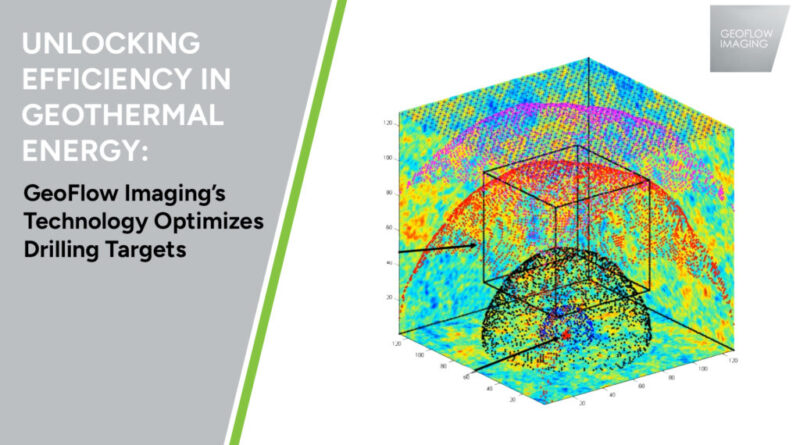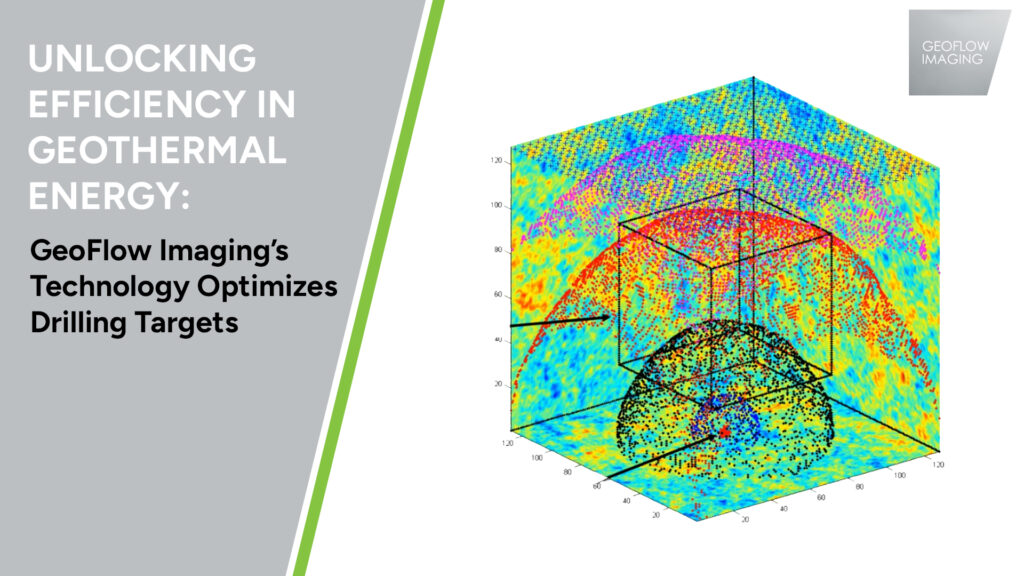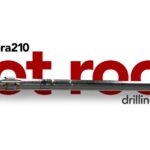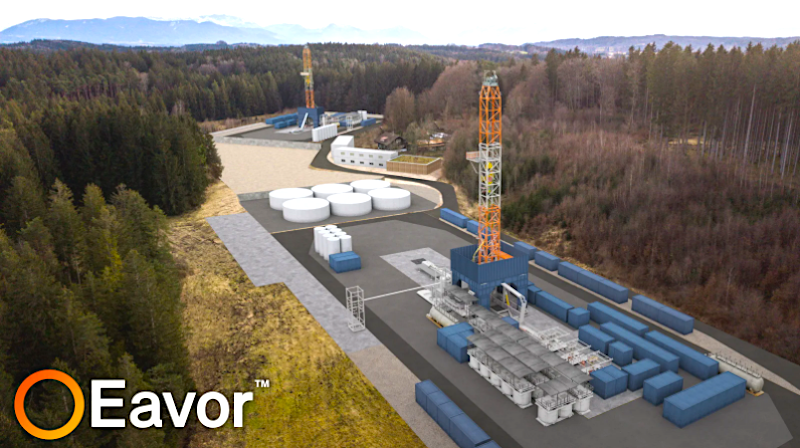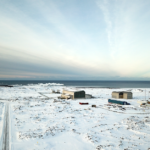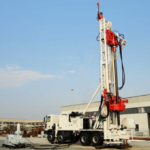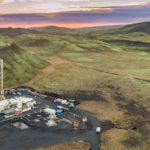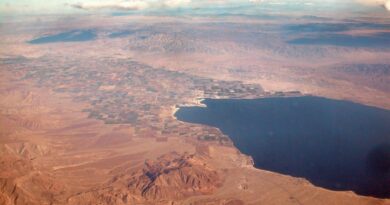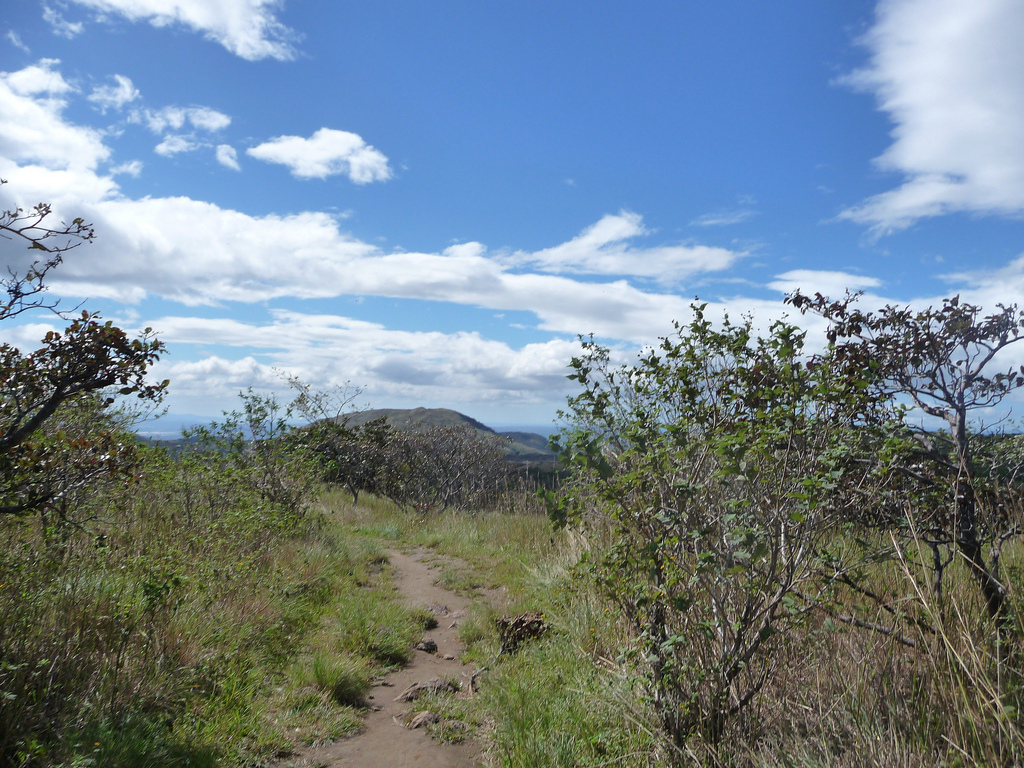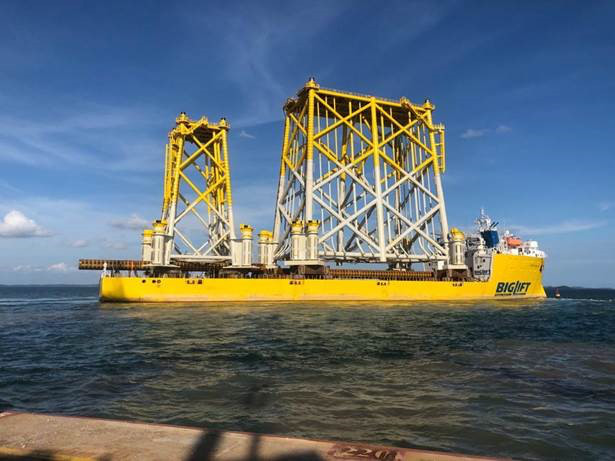Optimizing geothermal drilling targets with GeoFlow Imaging’s technology
Energy Disrupter
With advanced seismic imaging technologies, GeoFlow Imaging seeks to address geothermal development risks related to uncertainties in setting drilling targets.
Geothermal energy production is hindered by high operational costs, environmental impacts, and inefficiencies in current exploration methods. These hurdles limit its ability to compete against established energy sources. It is within this context that GeoFlow Imaging (GFI) aims to become a transformative player by introducing advanced seismic imaging technologies that will help overcome the economic and environmental drawbacks of geothermal exploration.
The mission of GFI is to significantly reduce the barriers to geothermal project development. GFI is introducing an innovative approach that can identify drilling targets up to an accuracy of 50 meters. This will help massively in improving the economic viability and accessibility of geothermal energy.
GFI uses advanced passive seismic imaging techniques to achieve unprecedented accuracy in mapping high permeability zones within geothermal reservoirs. Accurate mapping will reduce exploration risks and streamline the development process, reducing the number of wells needed to discover geothermal resources and optimizing the energy output of each well drilled. This can reduce overall drilling costs by over 50%, putting geothermal in a more competitive position against other energy alternatives.
GFI envisions a future where the full potential of geothermal energy is realized. The science and methods behind GFI will enable the development of previously unviable resources and expand the capacity of existing geothermal plants, especially in fault, rift, and volcanic regions.
Seismic Imaging Technology
The GFI method starts by generating seismic waves below the geothermal reservoir and measuring how they travel through the reservoir. The geological structures the waves pass through, including different rock types and fluid contents, affect the wave speeds.
The seismic imaging techniques developed by GFI, in collaboration with its partner Ambient Reservoir Monitoring (ARM), use the seismic wave movements to show which areas of the reservoir have higher and lower fluid flow and thus which are the best places to drill. The seismic imaging technology consists of two major elements – the velocity model based on new science from GFI’s scientists, and the ability to map active fractures and flow structures.
High-resolution velocity models, which are three-dimensional maps of the relative speed that seismic waves travel through different geological layers, are at the core of GFI’s new survey methodology. By analyzing the speed and path of the seismic waves generated below and travelling through the reservoir, GFI can infer the physical properties of the geological structures in the reservoir. These models are crucial for identifying zones of high fluid flow where geothermal energy can be extracted effectively.
In partnership with ARM, GFI adapts passive seismic imaging technology that has been developed in the shale oil and gas sector. This technology is then used to map active fractures and flow structures in geothermal systems. This adaptation allows for more accurate location of permeable zones where geothermal fluids are actively flowing, i.e. prime targets for drilling.

Enhanced Accuracy and Insight
Currently the best spatial resolution of geothermal exploration methods is on the order of 500 m, leading to the drilling of many non-viable, poor producing wells. GFI has developed the ability to compute more accurate velocity models. Combined with advanced seismic imaging techniques, GFI can improves location accuracy by a full order of magnitude to 50m depending on the depth of investigation. GFI thus can produce highly detailed maps of the subsurface, highlighting critical flow structures and active fractures that are essential for successful well development.
This comprehensive approach positions GFI as a pioneer in the field, transforming geothermal exploration with technology that harnesses geothermal energy more effectively.
Economic Advantages
GFI’s high-resolution passive seismic imaging can reduce the development timeline of geothermal projects by improving well targeting. Detailed subsurface imaging makes drilling operations more accurate, thereby ensuring more effective resource extraction and significantly lowering financial risks.
The innovative approach of GFI results in substantial cost reductions by shortening both exploration and development project timelines. During the exploration phase, costs are reduced by 50%, leading to an overall project cost reduction of approximately 20-25%. This cost efficiency stems primarily from minimizing drilling, which traditionally consumes a significant portion of project budgets at both the exploration and development stages.
By providing detailed data on fluid pathways and accurate subsurface images, GFI substantially improves the success rates of drilling operations. These gains not only maximize resource utilization but also reduce the investment risks associated with geothermal projects. This helps to attract more private sector capital and lessens the financial burden on governments and NGOs.
With geothermal resources remaining untapped in many regions globally, including in Indonesia, Philippines, Japan, Eastern Africa, and North, Central, and South America, there remains huge potential for growth in this sector. Technologies like what GFI is offering is key to harnessing these conventional geothermal resources and empowering countries and regions to transition towards sustainable and resilient energy systems.
Comparative Analysis: GFI vs. Traditional Methods
Traditional geothermal exploration, involving extensive surface exploration followed by drilling, is both time-consuming and costly. In contrast, GFI utilizes advanced imaging technologies to provide accurate subsurface data early in the exploration phase. This approach facilitates targeted drilling, reducing the need for multiple boreholes, and reducing exploration duration from 39 months to 18 months, thereby slashing costs from $41 million to $19 million—a 53% cost reduction and 51% time savings.
During the project development phase, GFI continues to optimize by halving the number of required wells from 10 to 5, decreasing the timeline from 84 months to 60 months, and reducing costs from $292 million to $227 million for an 80-MW project. This not only saves $65 million but also cuts development time by 2.5-3.5 years. Such efficiencies make geothermal projects far more economically viable and time efficient.
With technology that can significantly reduce risks and costs for geothermal project development, GFI presents an attractive investment for private-sector capital investors. GFI aligns geothermal investments with the risk-reward profiles typical of other competitive energy investments, promising faster Return on Investment (ROI) and clearer exit strategies.
By providing detailed subsurface images before drilling begins, GFI minimizes the risk of unforeseen complications and cost escalations, boosting project success rates and making these ventures more appealing to investors and insurers. Consequently, GFI’s groundbreaking techniques are set to expand the global adoption of geothermal energy, facilitating faster integration into the energy market.
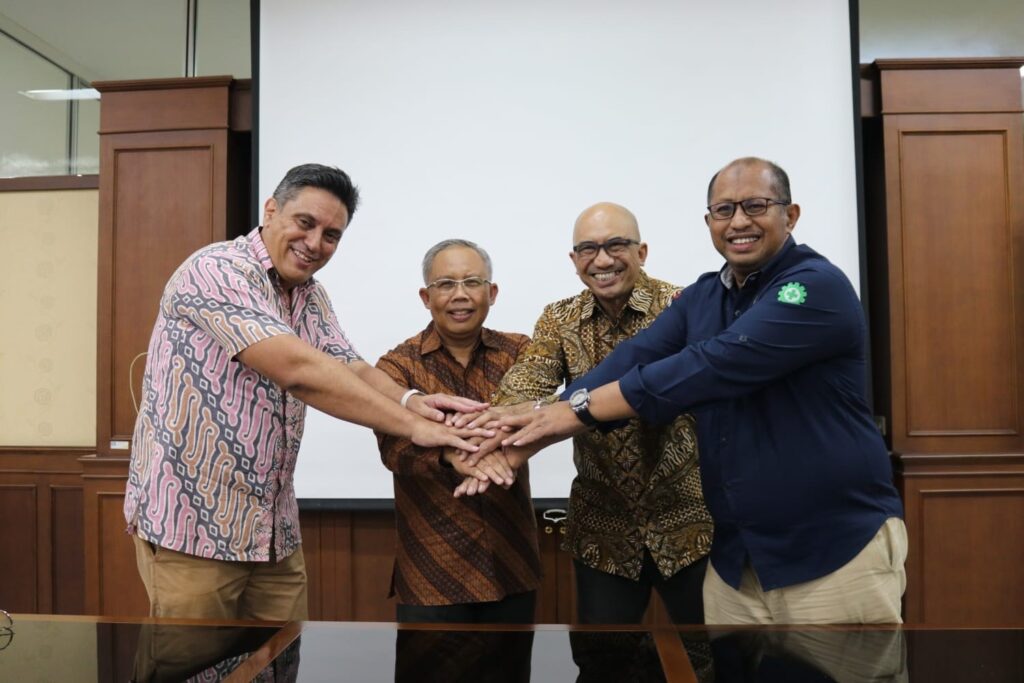
Funding for Patuha Proof of Concept, Indonesia
The GFI method is set to be showcased in a transformative Proof of Concept (POC) at the Patuha Geothermal Plant in Indonesia, a collaborative effort with Geo Dipa Energi (GDE) and the University of Gadjah Mada (UGM). This project builds upon previous ARM collaborations in the geothermal space, including the successful imaging of a fault-hosted geothermal system at Lightning Dock, New Mexico, and permeable structures at Newberry Volcano, Oregon.
GFI has been self-funded but is now seeking to raise USD 1.3 million from external sources to fund the Patuha Geothermal System POC, with expectations that a successful demonstration will enable rapid deployment of the technology, potentially within six months. Such a development could redefine geothermal energy exploration and production, offering a more efficient and less risky alternative to the status quo.
A Multidisciplinary Leadership
GFI is propelled by a team of visionary leaders whose expertise spans across scientific innovation and global commerce. Among these leaders are Graeme Saunders and Dr. Peter Leary, who serendipitously met five years ago. Their collaboration blossomed after the problem they sought to address of “where to drill” was validated by numerous geothermal developers, leading to the formation of GFI. This venture was established to develop, promote, and deliver their pioneering technology worldwide.
CEO Graeme Saunders, whose extensive background in international business across multiple sectors and markets was honed at Mitsui & Co., skillfully steers GFI through the global energy market. His counterpart, Chief Scientific Officer Dr. Peter Leary, is a distinguished physicist with over fifty years of experience. Peter’s deep knowledge of rock-fluid interactions has been pivotal in pioneering new geophysical methods at GFI. With a PhD in Physics from the University of Chicago and subsequent decades in academic research, he has pursued extensive knowledge of the Earth that has culminated in these breakthroughs in seismic imaging and subsurface mapping.
Together, Graeme and Peter’s leadership drives GFI’s mission to revolutionize geothermal energy development.
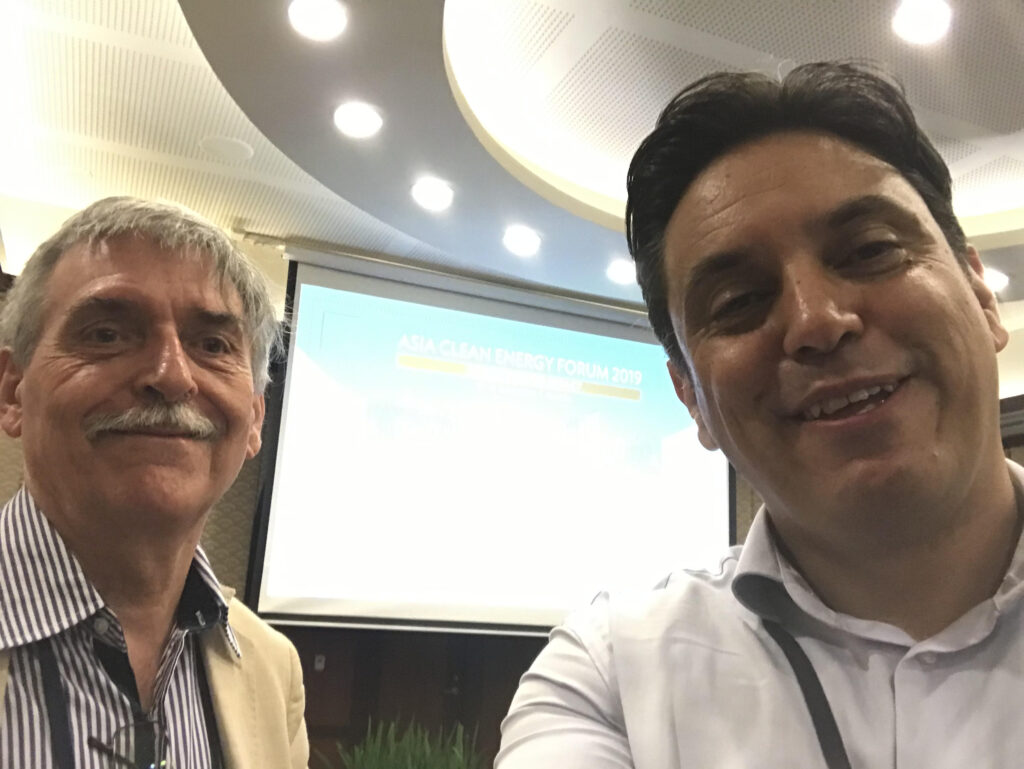
Scientific and Commercial Support
The GFI team supporting Graeme and Peter are a group of seasoned experts whose diverse expertise propels the company’s ambitions and innovations forward.
Luke McDonald, Head of Commercial and Legal, manages the complex regulatory landscapes of global energy markets. As the Managing Director of one of Australia’s leading renewable energy companies, his dual expertise in law and renewable energy ensures that GFI’s innovations navigate commercial risks to find their rightful place in the market.
Tom Fleure, CEO of Ambient Reservoir Monitoring (ARM) and a key partner, contributes over 35 years of specialized experience from the oil and gas industry, focusing on seismicity. His academic background in Geophysics Engineering from the Colorado School of Mines supports the technical adaptation of seismic technologies for geothermal applications.
Dr. Kate Lewis, a Senior Scientist, bolsters GFI’s research efforts with her extensive background in geology and geothermal geophysics, holding a PhD from Duke University. Her work supports Graeme and Dr. Peter Leary to keep GFI at the cutting edge of the industry.
This talented group fosters a collaborative approach that combines rigorous science with strategic business insights, driving GFI towards revolutionary solutions in the geothermal energy sector.
Pioneering the Future of Geothermal Energy
As GFI gears up to launch its POC at the Patuha Geothermal Plant, the company is on the brink of catalysing a significant transformation in the geothermal energy sector. The innovative passive seismic imaging techniques can redefine industry standards by accurately mapping geothermal reservoirs and thus driving down the costs of geothermal exploration. The technology reduces the number of exploratory and production wells needed, minimizing both environmental impact and financial expenditure. GFI promises to improve the feasibility of new projects and extend the profitability of existing ones.
The successful implementation of GFI’s POC can create a breakthrough in geothermal development characterized by substantially lower economic barriers and reduced exploration risks. By inviting energy developers, investors, and the wider geothermal community to participate in this transformative phase, GFI is positioning itself at the forefront of a geothermal revolution.
GFI’s call to action for early adopters is clear: Now is the time to engage with a technology that not only revitalizes stalled projects but also unlocks new geothermal resources, making clean and reliable energy more accessible globally. With costs and risks significantly lower than those of traditional methods, GFI underscores that the real risk lies in adhering to inefficient exploration techniques.
As the sector seeks innovative solutions to enhance efficiency and reduce costs, GFI’s approach could set a new industry benchmark. This bold invitation from GFI encourages active participation and open dialogue; the company confidently embraces a transparent approach so all can understand and engage in the revolutionary potential of their technology.

